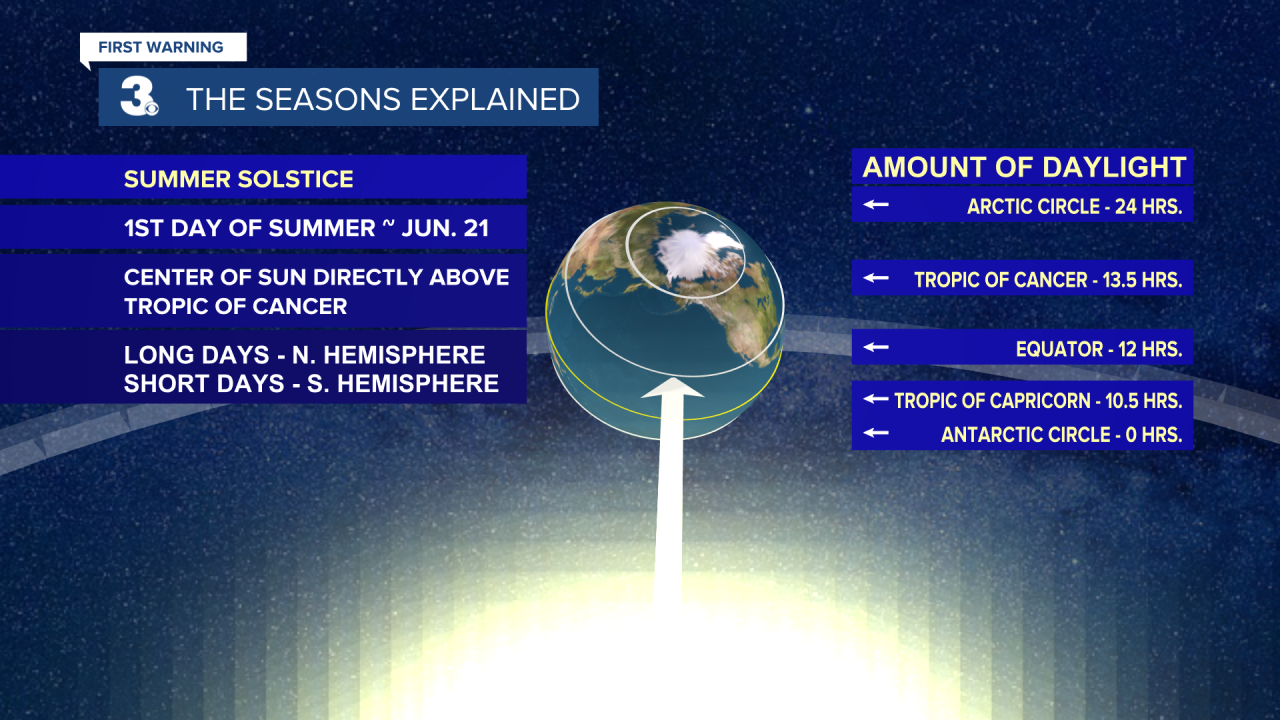The first day of spring is always exciting. Flowers start blooming, temperatures trend warmer and we get more daylight. The changing seasons brings up words like equinoxes and solstices, but what are they?

We can thank the tilt of the Earth on its axis for our change in seasons. This means that different points on the earth receive sunlight at different times of year. The equinoxes happen in March and September and the Solstices happen in June and December.
Let's first look at the vernal or spring equinox, which we welcomed on Sunday, March 20th. The sun is directly above the equator, which makes the length of day and night equal. You can see on this diagram, all areas including the Arctic Circle, Tropic of Cancer, Equator, Tropic of Capricorn, and Antarctic Circle receive about 12 hours of daylight.

There's also the Summer Solstice, which we will welcome on June 21st, signifying the First Day of Summer. This occurs when the sun is directly above the Tropic of Cancer. Here in the Northern Hemisphere, we have longer days, while the Southern Hemisphere has shorter days. You can see on the diagram that while the Arctic Circle receives 24 hours of daylight, the Antarctic Circle receives zero.






